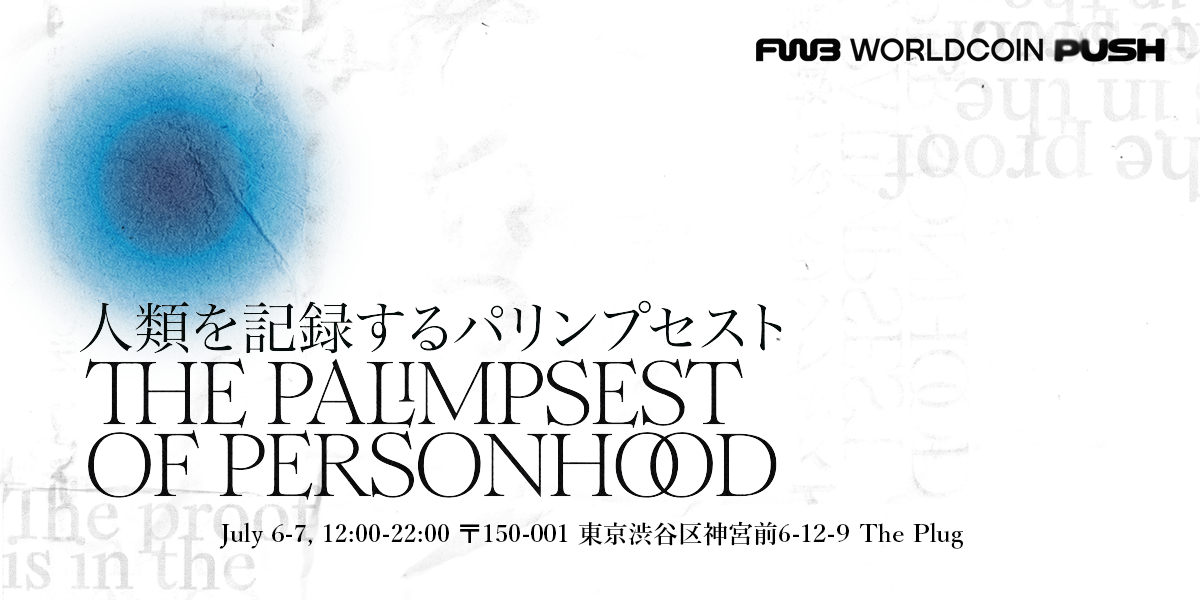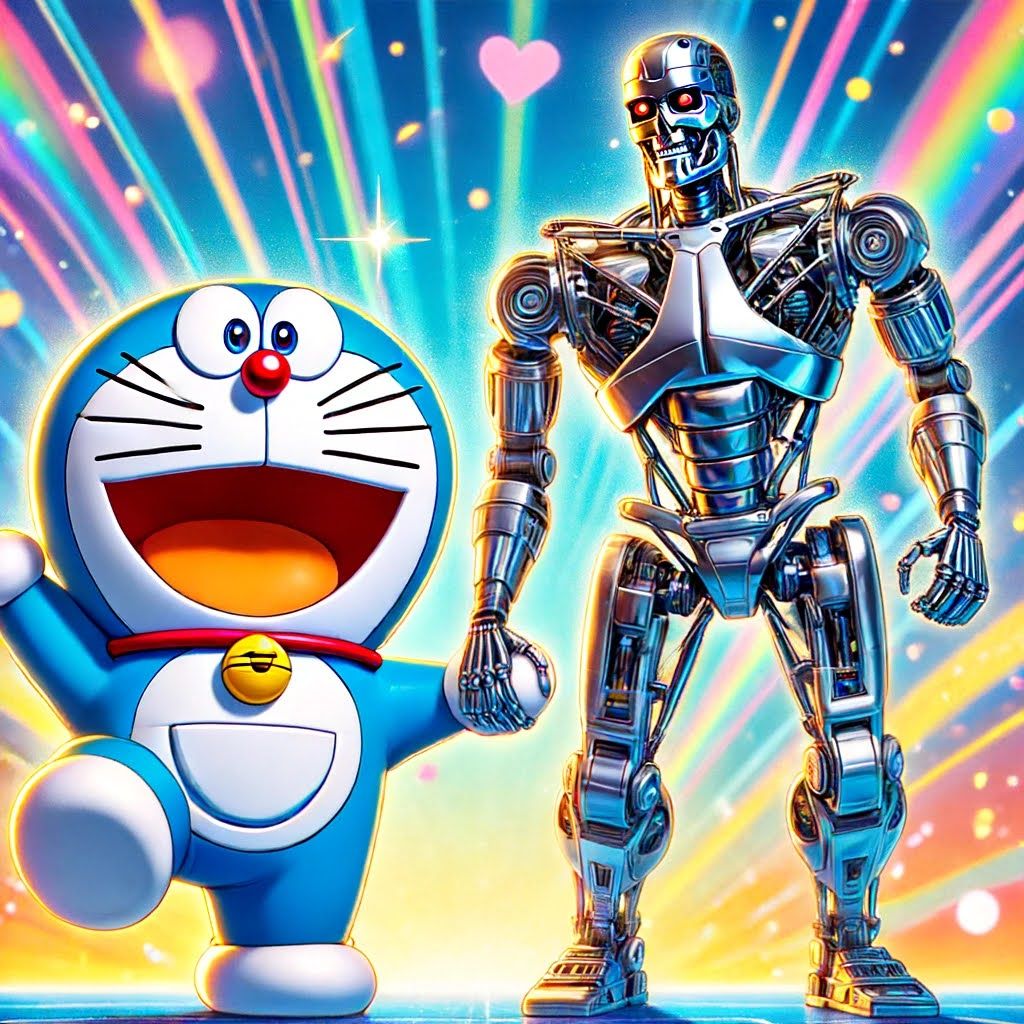- Aleph
- Anna Gat
- Ariel LeBeau
- Austin Robey
- David Blumenstein
- David Ehrlichman
- David Kerr
- Devon Moore
- Dexter Tortoriello
- Drew Coffman
- Drew Millard
- Eileen Isagon Skyers
- FWB Staff
- Gaby Goldberg
- Greg Bresnitz
- Greta Rainbow
- Ian Rogers
- Jessica Klein
- Jose Fernandez da Ponte
- Jose Mejia
- Kelani Nichole
- Kelsie Nabben
- Kevin Munger
- Khalila Douze
- Kinjal Shah
- Kyla Scanlon
- LUKSO
- Lindsay Howard
- Maelstrom
- Marc Moglen
- Marvin Lin
- Mary Carreon
- Matt Newberg
- Mike Pearl
- Mike Sunda (PUSH)
- Moyosore Briggs
- Nicole Froio
- Original Works
- Ruby Justice Thelot
- Ryne Saxe
- Simon Hudson
- Steph Alinsug
- The Blockchain Socialist
- Willa Köerner
- Yana Sosnovskaya
- Yancey Strickler
- iz

Wed Jun 26 2024

“What does it mean to be human?” This is a question that societies around the world have explored consistently throughout history. From ancient Greek mythology to Gothic horror, Irish folklore to Afrofuturism, our predecessors and contemporaries have interrogated the existential themes of artificial intelligence and simulation theory, long before the advent of the internet. One need not be Chronically Online to have grappled with Roko’s Basilisk – we’ve grown up with such thoughts and concerns embedded in mainstream media, school curricula and counterculture; each instance rooted in different customs, understandings and beliefs. Each time we enter into discourse around AI and personhood, voice our opinions, express them in art and culture, we write our perspective on top of the layers and layers of explorations that have come before us. Intentionally, unintentionally, we challenge the dominant narrative, or we crystallize it.
This is The Palimpsest of Personhood.
FWB is a platform that encourages people to engage with emergent technology, culture, and the resulting discourse. After an inaugural 2024 collaboration with Worldcoin at Feria Material, Vol. 10 during Mexico City’s Art Week, we return to build on that edition’s theme – The Paradox of Personhood, which examined the dichotomous relationship between technological optimism and the complexity of our current age. With this iteration, we call attention to the cultural mores and dynamics that guide our understanding of the world. Hence, the Palimpsest: originally, a wax tablet on which the author would repeatedly write and erase inscriptions, and which has evolved to represent any object, either literal or metaphorical, which contains layered, contested, overlapping and mutating meanings.
Japan is a particularly suitable backdrop for considering contested meanings. Throughout history, Japan’s cultural output has never been absent from the global stage, and yet in contemporary times it has been consumed through a prism of Orientalist and even self-essentializing ideologies (the ghosts of nihonjinron remain present even in the nation’s current “Cool Japan” strategy). Coinciding with the timing of the Tokyo Gendai international art fair, which brings together such a globally diverse set of creators and curators, we can collectively seek to identify the cultural biases that have led us here.
For every Terminator and “Murder at the End of the World”, there is a corresponding positive expression of techno-animism, from Doraemon to Gundam.
At the same time, I frequently revisit art historian Xin Wang’s 2017 e-flux article on “Asian Futurism and the Non-Other”, in which they so presciently noted that: “The post-internet condition has also transformed the game of self-reflexivity in art and its medium. Art practitioners can no longer monopolize or even excel at this form of introspection, which is being overtaken by the most inspired TV shows, video games, and even memes.” If this essay itself can be considered a contribution to the Palimpsest of Personhood, it will inevitably be buried under the layers of memes that truly shape our comprehension of the topic in 2024.
Let us return to what should be a relatively familiar and shared territory: the trajectory of popular science fiction that was surely the “top layer” of the Palimpsest during the post-war decades. Largely shaped by Hollywood and a western, Judeo-Christian ideological foundation, where better to reflect on unconscious cultural osmosis than in Japan, which offers a familiar yet contrasting perspective on technology? In the 1950s to 1970s, America witnessed the rise of the contemporary Adamic in the form of the U.S. space program: NASA’s key positions during this foundational period were filled by evangelical Christians, and many astronauts carried Bibles in their spacesuits as they set off for a redemptive restart on another world. At the same time, Japan’s vision of the posthuman was an infant child, Astro Boy, in a world where humans and advanced technology could peacefully coexist, long before Japan possessed the reputation for science and technology that it currently boasts. This has continued, since – for every Terminator and “Murder at the End of the World”, there is a corresponding positive expression of techno-animism, from Doraemon to Gundam.

As Japanese pop culture has spread in popularity throughout the world, fast-tracked by digital media distribution and globalized e-commerce, it has increasingly influenced broader discourse on cyberculture. And yet, old habits die hard. More than a few readers will be familiar with the clip of venerated Studio Ghibli director Hayao Miyazaki, who, upon being shown a clip of some particularly uncanny AI-generated humanoids, remarked, “I strongly feel that this is an insult to life itself.” In English-language publications, his reaction is frequently referenced as a wholesale critique of AI – a reading that projects both western technophobia and an essentializing of Japanese cultural tropes around craftsmanship. It misses the additional context: Miyazaki recalls a close friend with physical disabilities, saying, “Whoever creates this stuff has no idea what pain is.” Not only is it presumptuous to assume that Miyazaki is not aware of Japan’s many innovative developments in AI designed to alleviate pain – from the PARO therapeutic seal to newer inventions such as the Qoobo and Lovot – but it also ignores the Studio Ghibli cinematic oeuvre itself, full of robots that play the role of benevolent caretakers.
Let us take this opportunity to reflect on the myriad cultural touchpoints that have influenced our individual and collective attitudes towards AI. We have seen that previous generations have all struggled to define personhood, and this task has not been made easier with recent technological developments: robots solving captchas, generative goo, deepfakes; the Worldcoin products do not shy away from the paradox of personhood, nor are they exempt from the Palimpsest. We invite you to explore where the Orbs sit within your cultural lexicon – and to make your own contribution to the Palimpsest.
----
「人間であるとはどういうことか?」。これは世界中の社会が歴史を通して一貫して探究してきた問いである。ギリシャ神話からゴシック・ホラー、アイルランド民間伝承からアフロフューチャリズムにいたるまで、インターネット到来の遥か前から、私たちの先人と同時代人たちは、人工知能とシミュレーション理論の実存的テーマを問いただしてきた。ロコのバジリスクに取り組むのに、常にオンラインである必要などない。主流メディアや学校のカリキュラム、カウンターカルチャーに組み込まれたそのような思考と関心とともに私たちは成長してきた。各々の事例は異なる習慣、理解や信念に根ざしている。私たちがAIと人間性をめぐる言説に直面し、考えを言葉にし、芸術と文化でそれを表現する度に、すでに重なっている探究のレイヤー群の上部に自らの観点を書き記すことになる。意図的にせよ、そうでないにせよ、私たちは支配的なナラティヴに立ち向かうか、それを結晶化させるのだ。
これが「人間性のパリンプセスト」である。
FWBは、新たなテクノロジーと文化、それに伴う言説と人びとが関わるのを促進するプラットフォームだ。メキシコシティ・アートウィークにおけるフェリア・マテリアル Vol .10(Feria Material, Vol.10)でのワールドコイン(Worldcoin)との2024年の最初のコラボレーション以降、技術的楽観主義と現代の複雑性の二分的関係性を検証したその回のテーマ、「人間性のパラドックス(The Paradox of Personhood)」を私たちの基軸となっている。この反復によって喚起するのは、世界理解を導く文化的慣習と力学への注意だ。したがって、「パリンプセスト(palimpsest)」なのだ。本来、これは書き手が記述と消去を繰り返す蝋板を指す。そこから、文字通り、あるいは暗喩的に、レイヤーを持ち、論争され、重なり合い、変異する意味を持つあらゆる物体をも表象するようになった。
日本には論争の的になる意味を考察するのにとりわけ適した背景がある。歴史を通して、日本の文化的発信がグローバルな場から消えたことはなく、現代においてもオリエンタリズム的で、自己本質化的でさえもあるイデオロギーのプリズムによって消費され続けている(日本人論の幽霊は国の現在の「クール・ジャパン」戦略にも現存している)。世界的に多様なクリエーターとキュレーターたちが集う国際アート・フェア、トーキョー・ゲンダイ(Tokyo Gendai)の開催と重なる今回、私たちをここに導いた文化的偏見を集団的に特定することができる。
また、2017年に『e-flux』で発表された記事である美術史家シン・ワン(Xin Wang)による「アジア未来主義と非-他者(Asian Futurism and the Non-Other)」に、私はしばし立ち返る。そこでは以下のように予見的に述べられている。「ポスト・インターネット的状態は、アートとその媒体における自己再帰性のゲームも変貌させた。この内省の形式は、傑出したテレビ番組、ビデオ・ゲーム、さらにはミームにまで追い抜かれており、アートの実践者たちは、それを独占することも、そこで秀でることもできない」。このエッセイ自体が人間性のパリンプセストへの貢献として捉えられるのだとしたら、2024年のトピックの私たちの理解を真に形作っているミームのレイヤー群の下に、そこに書かれているものも不可避的に埋もれてしまうだろう。
比較的馴染みがあり共有されている領域に目を向けてみよう。戦後数十年におけるパリンプセストの「上層」は、間違いなく人気サイエンス・フィクションの軌跡だった。ハリウッドと西洋のユダヤ・キリスト教のイデオロギー的基盤によって大部分が形作られ、技術に対する馴染み深くも対照的な観点を示す日本よりも無識的な文化的浸透をよりよく反映する場所はあるのだろうか。1950年代から70年代にかけて、合衆国の宇宙計画という形式に、アメリカは現代のアダム的存在の台頭を目撃しました。この基礎的な時代におけるNASAの重要なポジションを占めていたのは、福音派のキリスト教徒たちであり、別世界で贖罪的再始動へと旅立つ時、多くの宇宙飛行士たちは聖書を携帯していた。同時期に、日本が抱いたポストヒューマンの未来像は、人間と高度発達した技術が平和に共存しうる世界の『鉄腕アトム』という幼い子供だった。それは日本が現在誇っている科学技術の名声を獲得するずっと前のことである。この流れは続いている。ターミネーターと「世界の終わりの殺人」にそれぞれ対応する形で、ドラえもんからガンダムにいたるテクノ-アニミズムの肯定的表現が見受けられるからだ。
デジタル・メディアの配信とグローバル化されたeコマースによって加速し、日本の大衆文化は世界中で人気を博し、サイバーカルチャーに関するより広範囲の言説にますます影響を与えることになった。けれども古い習慣は簡単には消え去らない。尊ばれるスタジオ・ジブリの宮崎駿監督は、AIによって生成された非常に不気味なヒューマノイドの映像クリップに対して、「極めて何か生命に対する侮辱を感じます」、と発言した。英語圏における出版物で、彼の反応はAIに対する全面的な批判として頻繁に参照されるのだが、これは西洋の先端技術恐怖症と職人精神をめぐる、日本の文化的お決まりごとの本質化を投影した読み方であり、次の文脈を欠いている。宮崎は身体障害を持った親しい友人を思い出し、「これを作る人たちは痛みとか何も考えないでやっている」、と言うのだ。PAROのセラピーアザラシ型ロボットや、QooboやLovotのような最近の発明に見られる、痛みを和らげるためにデザインされたAI分野での、日本の多くの革新的な発達に宮崎が関心を持っていないとするのは憶測に過ぎない。またそのような見方は、慈悲深い世話人としての役割を果たすロボットたちが多く描かれた、スタジオジブリの映画作品そのものを無視している。
この機会に、AIに対する私たち個人の、そして集団的な態度に影響をもたらしている無数の文化的接点を振り返ってみよう。以前の世代は人間性を定義するのに難儀していたが、この課題が昨今の技術発達によって容易になったわけではない。CAPTCHA(キャプチャ)を解くロボット、 生成的流動体、ディープフェイク。ワールドコインの製品は人間性のパラドックスから目を背けず、パリンプセストから外れてもいない。自分の文化的レキシコンの中のどこにオーブが位置するのかを探求し、パリンプセストに自分自身の貢献を残してほしい。
Translation by Hayato Takahashi


